by Barbara Pachler
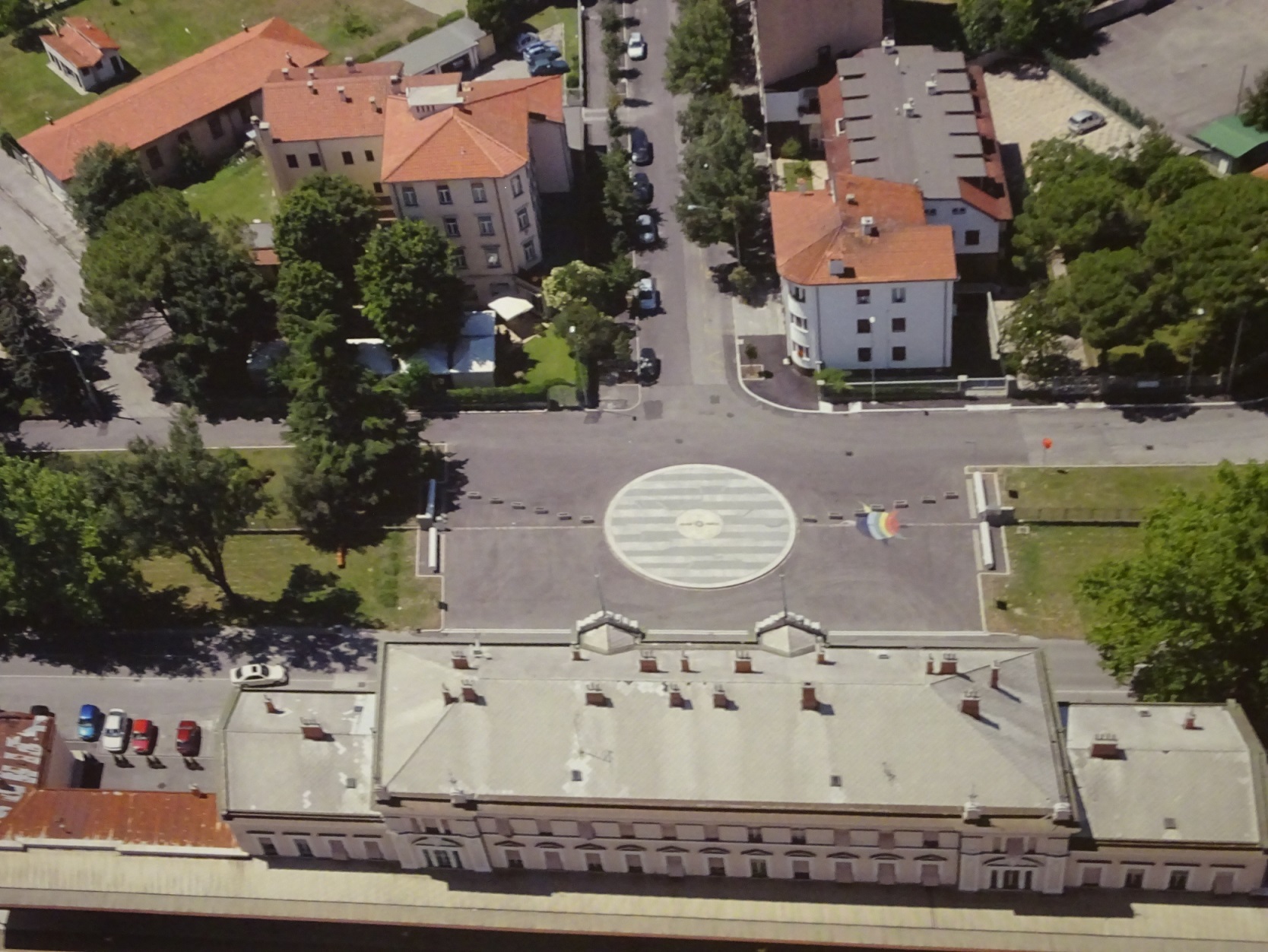
Public space as a shared social sphere proves to be a peculiar kind of territory in many ways. A small-town square that is not only public but also crossed by the border between Italy and Slovenia, i.e., the “Western World” and the former Yugoslavia, is, therefore, all the more worthwhile taking a closer look at. Such an ethnographic glance at the scenery of Trg Evrope/Piazzale della Transalpina in Nova Gorica/Gorizia, the European Capitals of Culture 2025, is attempted in this article. For this purpose, not only border studies and cultural memory research, as well as aspects of urban development, but also local voices from both sides of the border are meant to have their say in the “play.”
At first glance, the single, somewhat run-down platform may not appear special, but the longer you look, the clearer it becomes. This small-town station, right on the border with Italy and the town of Gorizia, is more than just another stop on the railway. For a start, it is pretty unlikely that travellers will arrive here by train. The Bohinj (slov. Bohijnska Proga, germ. Wocheinerbahn) railway line’s panoramic route between Jesenice (SLO) and Trieste (IT) might be well-known, but this is a small station, and only a couple of regional trains pass through every day. Consequently, the station building’s role in public transport by now has given way to a row of rather unexpected ways of usage. The Jugendstil building from 1906, which happens to be the last remaining architectural memorial of the Habsburg Empire in this region, today contains a border museum, two different local cultural initiatives, plus, most frequented, a bar, appropriately named Caffe Bordo (Engl. Border Café).

Sitting on the Café’s terrace and watching the square, the observer will soon notice that what actually leads tourists here is the square in front of it rather than the train station building itself. At first, it all seems rather unsuspicious. An unimposing green metal fence runs through a stretch with a couple of old trees. Next to it lies the empty asphalt square of Trg Evrope (Engl. Europe Square), but right through its centre, seamlessly merging the green fence, runs a line of dark bricks with an elaborate mosaic artwork in the middle – and this line happens to represent the national border between Slovenia and Italy.
No wonder, then, that an international spirit seems inherent in the square. On the terrace of Caffe Bordo, Italian conversations can be overheard as frequently as Slovene, and even English or German can occasionally be made out in between. Accordingly, instead of being a shabby train station bar, the Caffe Border is a place of encounter and, very much befitting the name “Trg Evrope”, visitors like to perceive it as a genuinely European location.
Observing the Trg Evrope from the Café’s terrace over the rim of a cup of Viennese Meinl coffee, one can witness many things. Depending on the date and time, there might be tourists having fun placing their feet on two different sides of the border and snapping a photo in commemoration of this unique event; a group of international journalists waiting for their border museum tour; a dance performance organised by one of the cultural initiatives located in the station building or, if one is very lucky, even a meeting of two state presidents accompanied by a whole orchestra – but more on that later.
In any case, these events do not occur on this square out of coincidence. There is a reason for their coming together, and that reason – you might have guessed it by now – is a simple line on the map.
A line and its meaning
Borders are an essential ingredient in how we make sense of the world around us. They exist in various forms, as boundaries between humans, language borders, administrative limits, and of course, as spatial borders on all scales, from tectonic plate margins separating continents down to your neighbour’s garden fence. However, the greatest focus of attention is usually given to national state borders. Apart from their functional aspect, they tend to represent power and political interests, making them a highly-charged and often controversial topic; in geopolitics as well as everyday discussions (Gerst et al. 2021: 9-15).
Consequently, their visualisation on maps and elsewhere quickly becomes an important symbol to create a sense of community and belonging. Everybody can recognise the shape of their home country, and if only from the map on the weather forecast [1] (see Anderson 2006; Billig 1995). For an illustration like this, borders are indispensable – without all those tangled lines providing a sense of shape, just like in pre-explorer times, there would simply remain a lot of blank, white space.
Starting in primary and middle school, all pupils are taught about the significance of borders. When asked to fill out an empty outline map or how to find their country, federal state or town in the atlas, they learn that every single geographical entity can be projected onto a piece of paper by a system of continuous lines. This way, we understand that space is not abstract and that the size and composition of the world are not incomprehensible but can be displayed and modelled. With the help of maps, we learn how to locate ourselves in space and make sense of it, and in every map, the lines representing all kinds of geographic borders are a key element.
Even though ancient maps got by without featuring any borders (Anderson 2006: 172), humans tend to view them as necessities, rooted in the physical units shaping the earth’s surface. The lines where territories or states meet often seem immobile and irreplaceable – especially if they coincide with topographic features like rivers or mountain chains (Gerst & Krämer 2020: 124 f). Radiating an authority of empirical truth, maps reinforce this impression. The fact that it is always humans who draw them – with assumptions, views and their own particular interests – is thereby easily forgotten.
“We are ‘geographic beings’ for whom the creation of places, and by consequence, the process of bordering, seems natural. But borders are not ‘natural’ phenomena; they exist in the world only to the extent that humans regard them as meaningful”,
geographers Alexander Diener and Joshua Hagen explain in their Very Short Introduction to Borders (2012: 1). Following this train of thought, borders are not ‘by nature’ part of our world – it is us, humans, who construct them in social processes, by arguing and then agreeing about where exactly they should be drawn. A prominent example of how arbitrary this process can be is the Congo Conference from 1885 in Berlin. At the conference, the great powers established the criteria for recognising colonial possessions in Africa under international law. The ruler-driven, orthogonal results can still be observed in the centre of any Europe-standard world map.
As mentioned, the term “border” is generally somewhat ambiguous. Even national borders can function in very diverse ways, being “bridges, gateways, and meeting points” as well as “barriers, obstacles, and points of separation” (Diener & Hagen 2012: 2). In addition, there are legal, bureaucratic, social and administrative borders tied to the political ones, which, though hardly ever visible, can have a significant impact on everyday life. This broadness, on the one hand, can lead to terminological blurring or confusion. On the other hand, it shows how crucial the concept of borders is for human thinking and for organising life in human communities (Gerst et al. 2021: 8 f, 534).
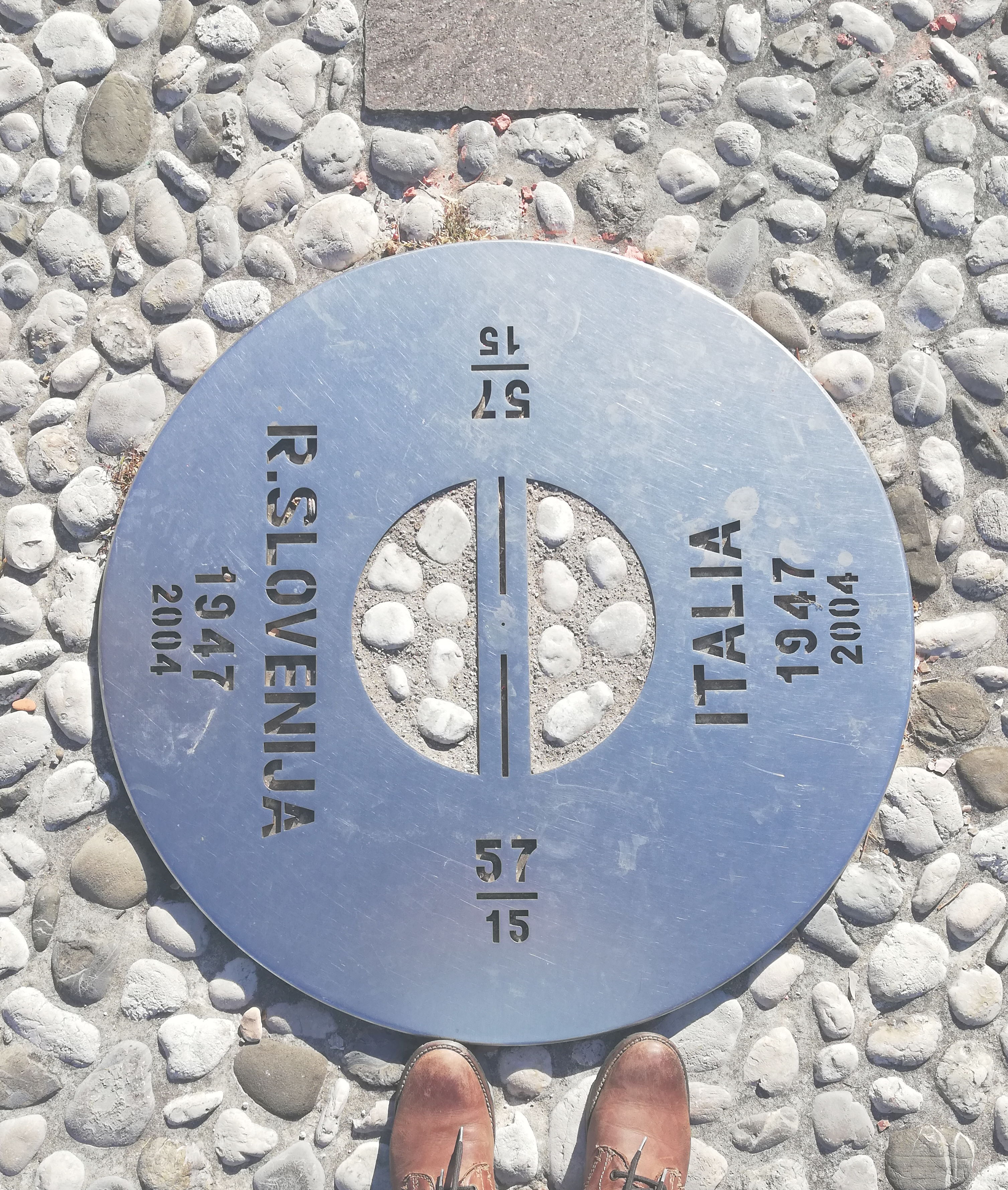
“Borders are necessary”, says Marko Klavora, historian and anthropologist at the Border Museum in Nova Gorica – “just what kind of borders is it that we’re talking about? “Sicuramente non quelli”, – certainly not that kind – he adds, pointing at the green fence marking the border to the square’s left and right. What looks like an odd garden fence today, 40 years ago used to be the local part of the cross-European border between East and West, separating Yugoslavia from Italy and the western part of Europe.
However, even before that, the local history is rather spectacular. During the First World War, the region played a crucial role in the battle between Italy and the Austro-Hungarian Empire. Gorizia, the Italian town right across the border, is not far from where the famous Isonzo-battles took place. In 1916, the Italians conquered the Sabotin hill next to Gorizia – a huge success, explains Klavora, which is still commemorated today by Italian citizens.
After the Second World War and 40 days of Yugoslavian partisan occupation in 1945, the Paris Conference in 1946 brought about more and graver changes. The border separating Gorizia from the surrounding Slovene Goriška region was established, and especially in the years between 1947 and 1954, the border was closed rigidly. For the inhabitants of this (cross-)border region, this meant a severe change in their habits and the perception of the space they lived in. Going from A to B suddenly meant crossing over to another policy, to a whole other system of beliefs, which in those first years, above all, meant violating the law. “For centuries, people in this region didn’t know the presence of a physical border”, Marko Klavora says; “And suddenly, they got sentenced for crossing it.”
Later, the border course was modified in the Osimo treaties of 1976, correcting faults such as a close-by cemetery split in half, and making the border more liveable for the local population. Moreover, in 1954 a document called Lasciapassare (Engl. Permission to Pass) was introduced for the Goriška inhabitants. By showing it, they could easily cross the border, making it “the most open border between East and West”, as Klavora says. However, the visible, physical border remained until 2004, when Slovenia became part of the European Union. It wasn’t until 2007 and Slovenia’s entrance into the Schengen area that the fence was finally torn down. In a spectacular event, the border stone in the middle of the fence was removed with thousands of people watching and representatives shaking hands, and from then on, at least the physical border was open.
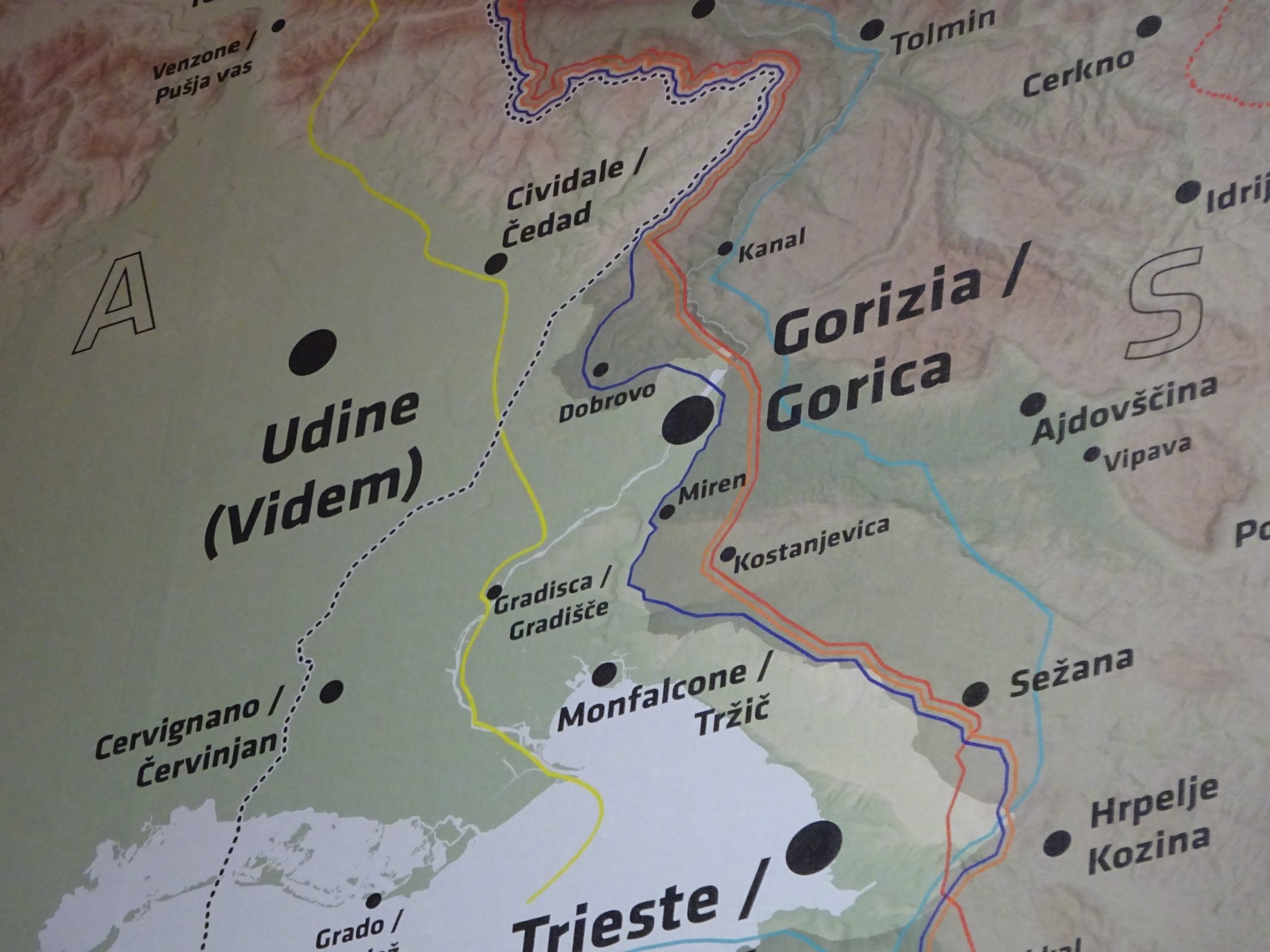
In a nutshell, the 20th century for this region meant a continuous re-evaluation of the local border concept. For a long time, the border did not appear as a given reality, nor did it turn out to be the “by nature”-matter of fact that maps and political interests often suggest borders to be. The spatial praxis of bordering is full of change, Klavora says – and this is something that Goriška inhabitants seem to have memorised by now. A certain distrust – or at least ambiguity – seems to be in place as soon as it comes to the border, especially here on Trg Evrope. Even the fact that the border is now open is not only seen as a good thing. At least economically, locals say, both towns were in a better position when the border was still closed.
At the end of this short glimpse into local history and border studies, the border on Trg Evrope still remains to be theoretically defined. Is it by now just a linear signature on the map? Is it more of a “fuzzy zone [or] transitional space” (Diener & Hagen 2012: 2) like it is analysed in frontier research? Does it mainly appear within the functional, legal, and bureaucratic separation of two neighbouring towns? Or is it most prominent within their inhabitants’ language differences?
The truth, as often, is probably to be found somewhere between all those aspects. So, instead of struggling for one definition, perhaps the Trg Evrope is best viewed as a vivid illustration of how the border term’s various layers can be piled and intertwined. Some, like the green fence, the mosaic or the railway line, appear as material parts of the world, while others, like the differing legislations or languages, remain invisible. Again, even though the average Goriška inhabitant probably does not muse that much about border studies, their experience in daily bordering processes gives them a profound understanding of the phenomenon’s complexity. “People here are used to living with the border”, says Klavora. “They don’t see it as a line.” And frankly, in the process of everyday life, would it not be strange to think they did?
Borderline Memory
Among all complexity, though, one recurring aspect of this particular border is its history and how people in the Goriška region remember it. The 20th century not only shaped the way people look at the border today, but it also influenced the region’s Cultural Memory – the collective praxis of remembering supported by institutions, media and selected artefacts, as described by Jan and Aleida Assmann (Assmann 1988, Assmann 2009).
An important period within this collective memory was reactivated when the border was shut entirely again in 2020 due to the COVID-19 pandemic. “It split me in half”, a middle-aged woman from Nova Gorica says, recalling the image of a building fence running right across the Trg Evrope. The months of closure, she explains, reminded her of the former border, when moving back and forth freely between the two cities was impossible. Similarly, a police officer from Gorizia describes the lockdown and especially seeing the Trg divided once again as a “traumatic” experience. Statements like these show that the Nova Gorica train station and especially the Trg Evrope in front are not just random places but sites that embody aspects of people’s personal lives and histories – or at least serve as images recalling their individual as well as collective experiences.
Pierre Nora defines places charged with symbolic meaning as Sites of Memory (fr. lieux de mémoire). Such sites combine a functional, a material, and a symbolic sense within them. In doing so, the term “site” is used in a rather broad way. Not only monuments and museums but also texts, emblems or even ceremonies can be called Sites of Memory (see Kroh & Lang 2010: 184).
In the Trg Evrope and the train station, the functional sense of an infrastructural location for public transport is highly faded. Instead, the symbolic sense is present in as many colours as spectators, ranging from associations with war, fear and separation to scenes of joy, unity and hope for the future. It is created through historical events and their political context, and it is not only a range of individuals who read this place as a symbol for their own memory. They also belong to two different nations, attaching their differing Cultural Memory to the same green fence, the same mosaic tiles on the floor, and the same hill visible in the distance.
The square’s material sense, by contrast, can be found in its details. Taking a closer look, the Trg proves to be full of items contributing to the aim of commemoration, with information signs telling the region’s history, along with half-faded maps, pillars and badges being just a few examples. The mosaic in the middle of the square is most p, showing scattered fragments of the former border. The boundary stone N° 57-15 that used to stand at the square’s centre was removed in a ceremonial act when the border was opened – but instead of being entirely abolished, it was moved just a few metres, now standing silently right next to the green fence. This setting seems like an allegory of the ambiguous role the border plays in the memorial scenery of Trg Evropa: “This is an open border”, it seems to say – “but a border it will always be.”
According to Nora, memorial sites are created with the intention of anchoring a space within collective memory – they stand for the need of communities to assure themselves of their shared identity. Diener & Hagen (2012: 1) state that borders “exist in the world only to the extent that humans regard them as meaningful.” Looking at the Trg Evrope, it seems that this, too, can be a kind of meaning projected onto the phenomenon, especially the physical manifestations of borders, which is the meaning to conserve, archive, and commemorate local history to stabilise collective identities.
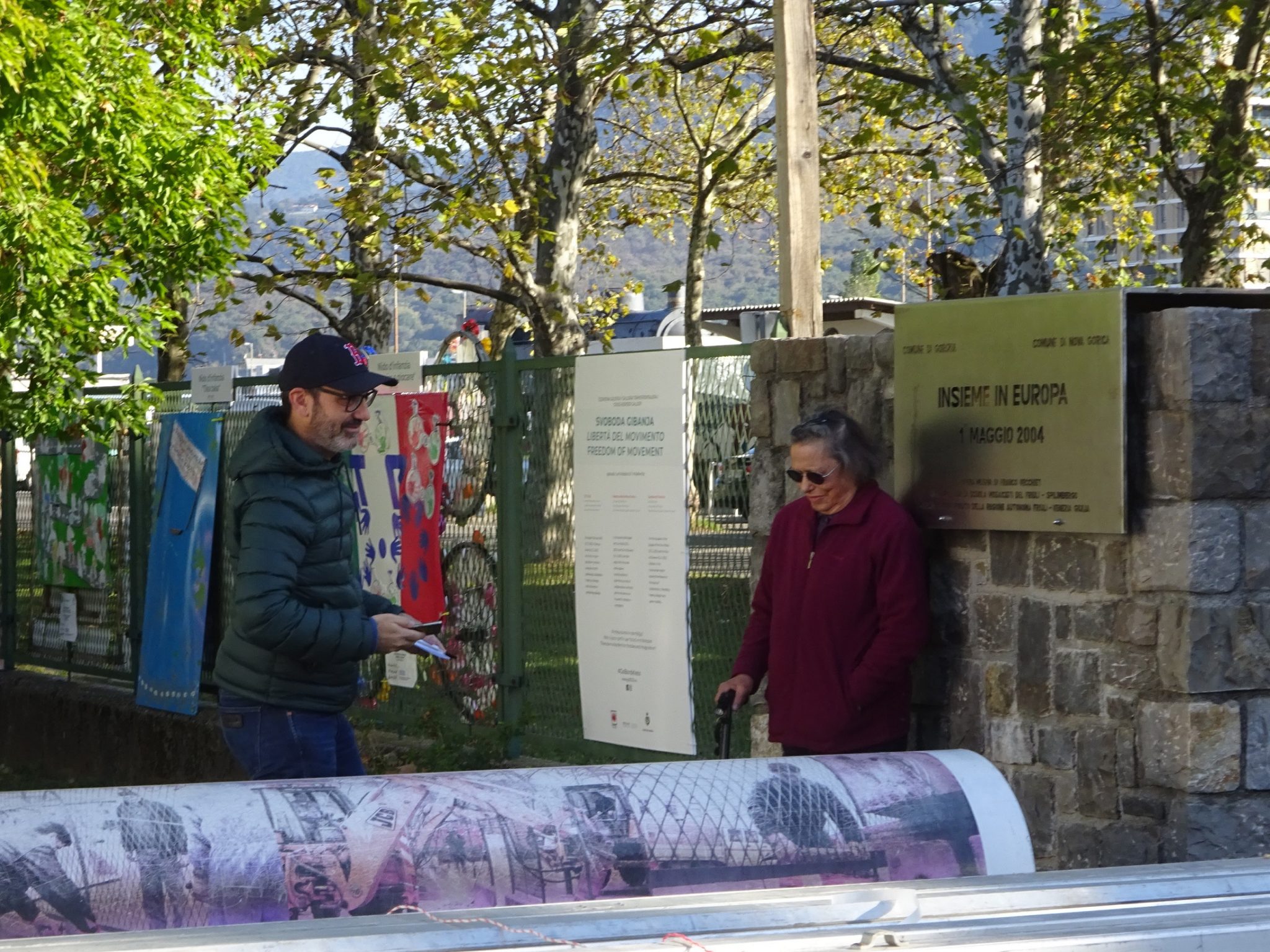
Public Space: One square fits all?
As explained before, the Trg Evrope is a complex space that needs to be viewed considering all its various layers and aspects. One perspective that has not yet been applied in this essay is that of spatial planning, and when looked at from this angle, the square in front of the Nova Gorica train station is, first and foremost, a Public Space.
Public space generally includes all spaces, streets, squares, or greens open for public use without any restrictions, such as obligatory consumption, which is typical for cafés or restaurants (Tophinke & Ziegler 2019: 299). The terrace outside the Caffe Bordo, for example, is not part of public space, whereas the Trg Evrope in front of it, by contrast, clearly is.
One of the most important characteristics of public space is that it can be appropriated by its users (Häberlin & Furchtenlehner 2017: 173). This appropriation generally happens without authorisation and can range from spreading out a picnic on a well-mown lawn to busking, begging, painting a street picture, right up to occupying space for political motives like a demonstration, plus it can also happen through signs, symbols and messages.
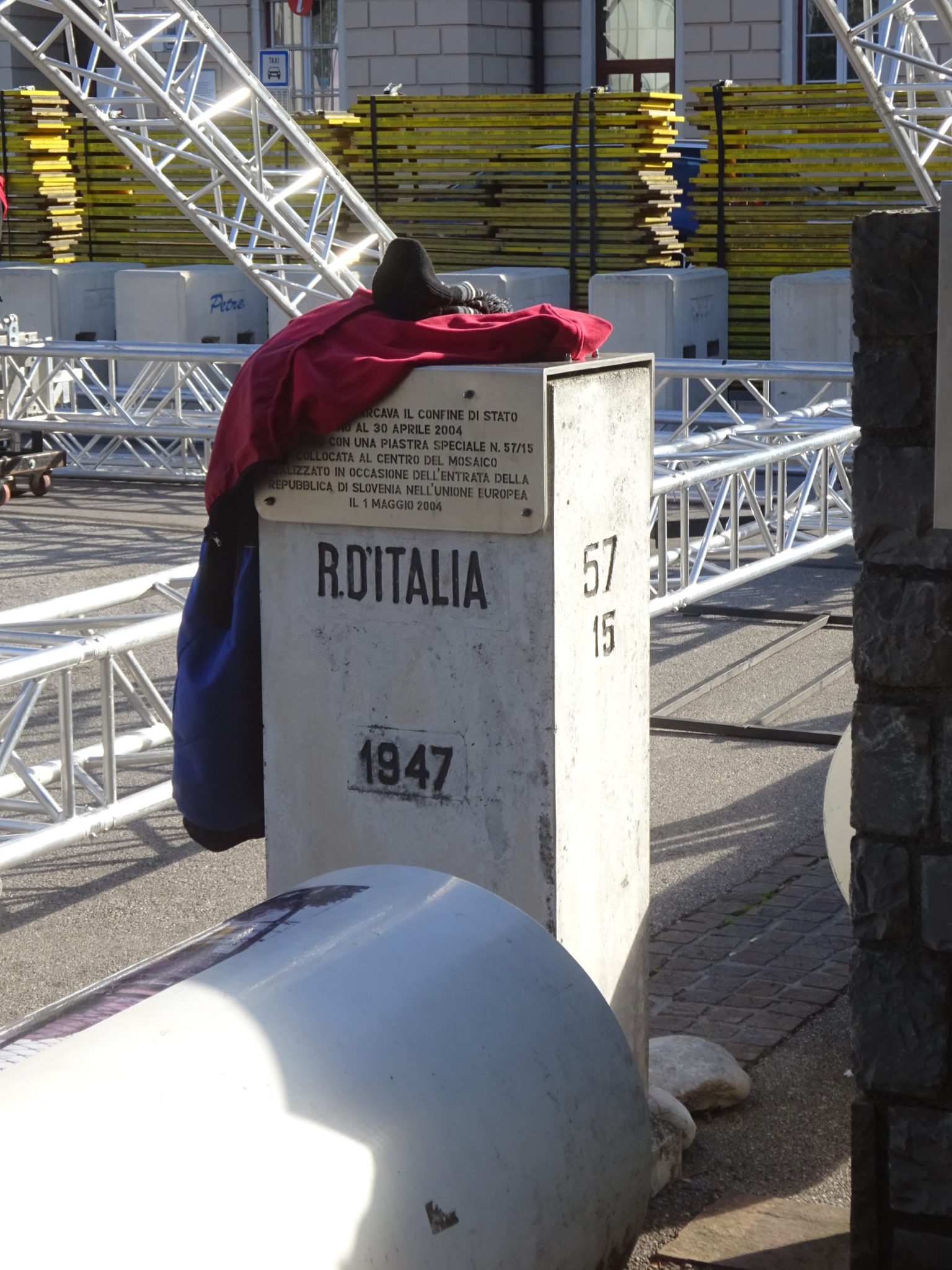
Even if those things occur in an unauthorised way, they still have their justification and purpose. Public space, just like the border, is not a fact guaranteed by topography. It is not simply there – instead, it is something that is interdependently constructed, or created, by its users. Furthermore, when being created, public space can also be designed, a process that often leads to contrasts in opinion and friction among users due to their different tastes and desires.
Especially in border environments, the Linguistic Landscape of public spaces can provide interesting insights into their social dynamics (Gerst et al. 2021: 15). This term generally describes “any visible display of written language as well as people’s interactions with these signs“ (Tophinke & Ziegler 2019: 298). Besides various train station signs and a wide range of border-related signposts, this also includes metal plates displaying the slogan “United in Europe” in both Slovene and Italian, as well as the square’s names. One of them is the Slovene endonym “Trg Evrope”, as the square is mainly called in this article. Just a few steps away, on the other side of the green fence, the same plate announces the name “Piazzale della Transalpina”, as the square is called in Italian. As soon as spoken language is included, the linguistic scenery becomes even more diverse. To tourists, locals often speak about the “Europe Square”, using the more intuitive exonym for the Slovene “Trg”. Depending on the speaker’s individual point of view, the name might come with attributes ranging from the “heart” to the “periphery” of the two towns. In present times, one might also hear talk about the “Epicentre”, the “Every Man’s Land”, “Our Home” or a much-quoted ”Meeting Point”, which are names that refer to the plans around the GO!2025-project – the European Capital of Culture 2025 represented by a cross-border alliance of Gorizia and Nova Gorica (Municipalities of Gorizia and Nova Gorica 2020).
The act of naming things or places is not trivial but an unobtrusive way of appropriation (see Dunker et al. 2017). Referring to the train station square in one language or the other, or in both, is already a kind of statement, whilst calling it “Our Home” builds up the vision of a future utopia, whereas conceptualising it as a “Meeting Point” intentionally emphasises a particular aspect of this border that might not necessarily overlap with the meaning other people read into this square. Therefore, the number of labels for the Trg Evrope is an indicator of the multiple interests and claims made to this square by different groups of people.
It seems rather obvious that, again, it is the border in all its complexity causing this desire for naming, shaping and framing. Of course, borders are highly common tools in terms of separation, but at the same time, they always bring two different sides together (Gerst et al. 2021: 126). Where groups of people meet, not only their languages but also their histories, their points of view and their interests come together – making locations like the Trg Evrope places of friction and conflict as much as exchange, innovation and encounter.
A space on stage
Peaceful or not – the various dynamics induced by the border make observing the Trg Evrope an activity that hardly ever gets boring.
“Su questo piazzale succede sempre qualcosa”
– there is always something happening on this square, a local from Gorizia comments, seemingly unconcerned, watching numerous workers construct a huge stage right on top of the border mosaic. The occasion for this enormous three-day effort is the official meeting of the two presidents of Italy and Slovenia, Mattarella and Pahor, in October 2021. This highly symbolic event, intended to represent something like the ‘Spirit of Europe’, later turns out to be rather an act of exclusion, with only a handful of invited guests and journalists being able to listen to the orchestra play Beethoven’s An die Freude, with all streets around the train station hermetically closed, and the police and security forces of both countries present everywhere. Meanwhile, the presidents smile into international cameras, shaking hands on stage directly on the border, thereby abolishing and celebrating it both at the same time.
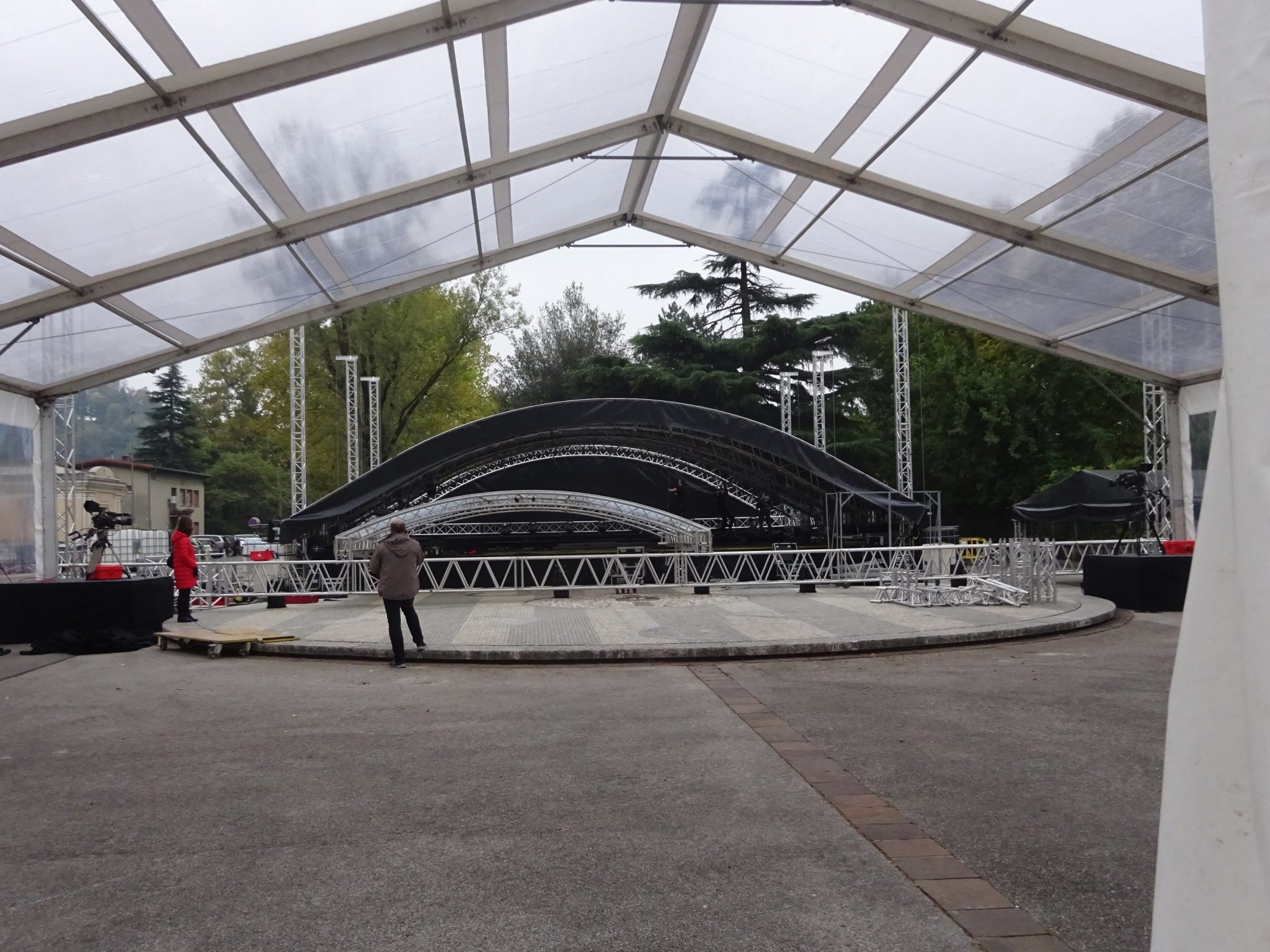
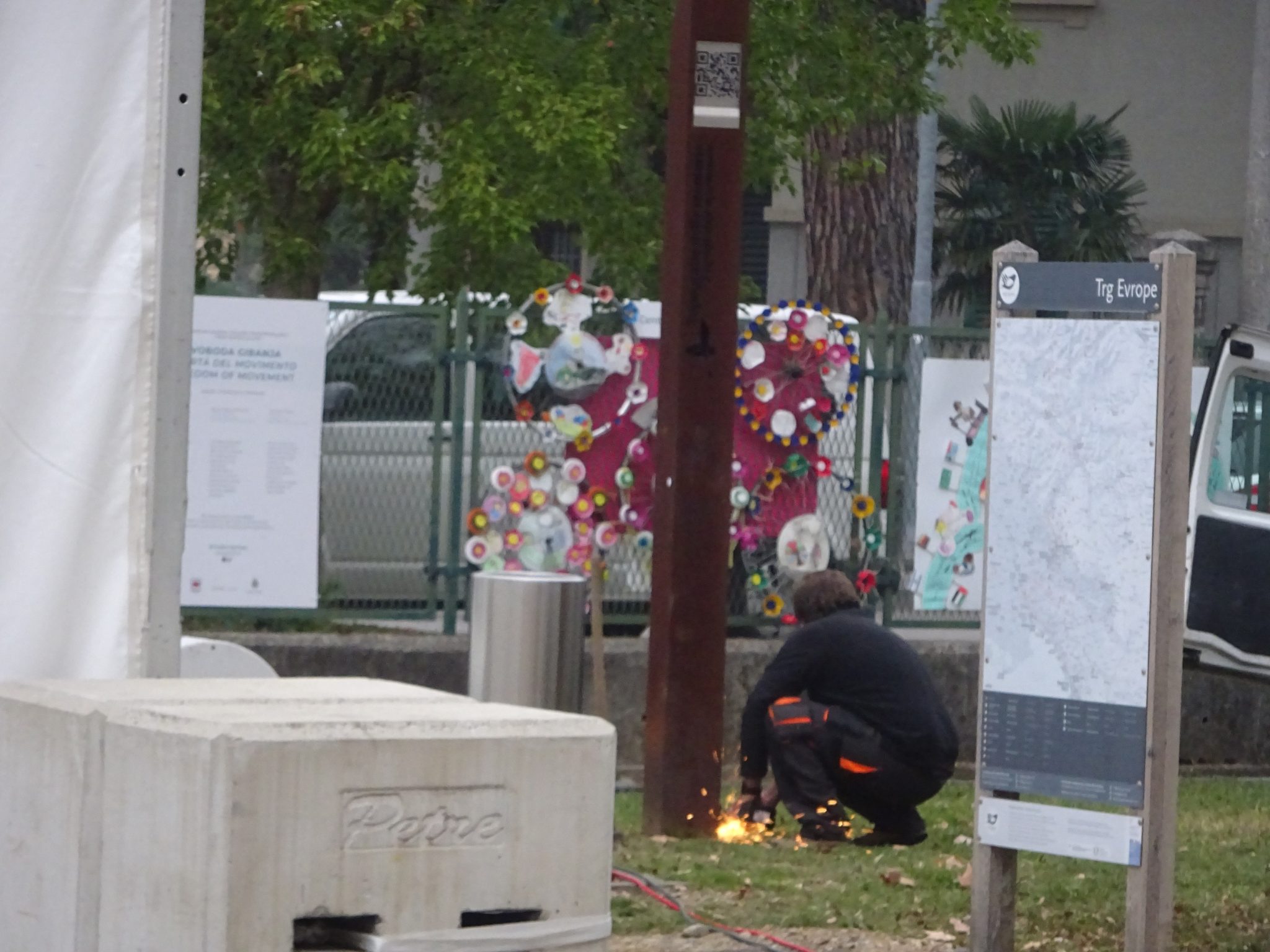
Curiously enough, the whole event seems to be a theory by sociologist Erving Goffman coming true. In his work, he argues that public social interaction resembles a theatre, with public space asa stage (Goffman 2009). Like figures in a play, people act and interact – or don’t – in a certain way when walking around a square or park, Goffman says. From this point of view, publicity is socially created – it originates from mutual presence and perception, from observing, and from being observed. As true as it might be for all kinds of public places, it is interesting to see how Goffman’s theory seems to fit the Trg Evrope particularly well. If there were no one to watch the presidents meet on the border, the whole event would lose its point. It is the interdependence of the actions on stage and the spectators on the open public square and, once again, the border, providing both occasion and meaning for the ceremony.
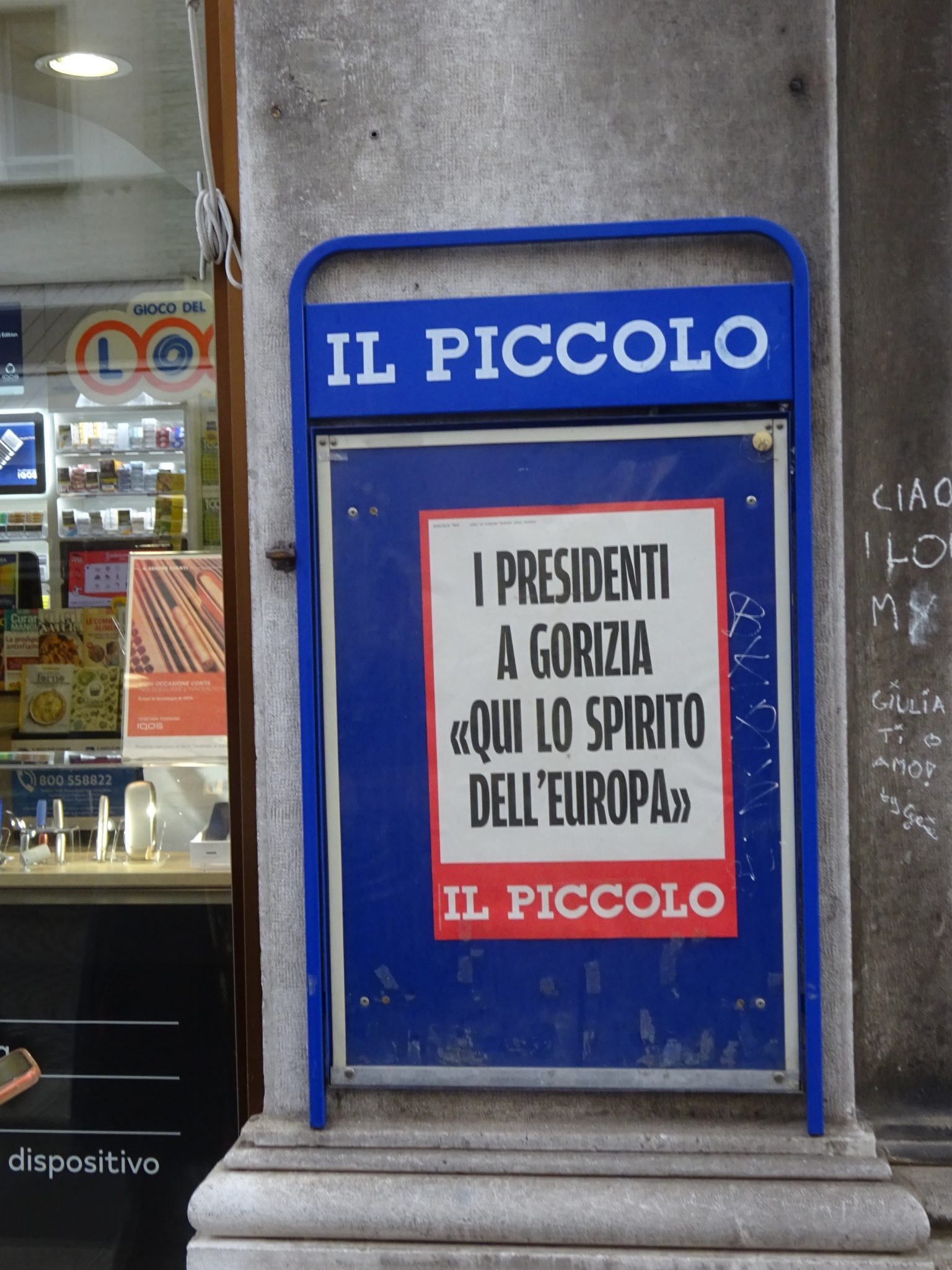
In contrast to the odd public town square, the Trg Evrope is a space covered with all kinds of verbal or non-verbal signs, in Slovene, Italian and English. Most of them relate to the square, the border and its history, but there is a message they seem to transmit all together: “This square is special”, they seem to say – “Things have happened here, and they should not be forgotten.” All those signs and items of commemoration spread over the stage named “Trg Evrope” – and why not call them ‘Border Props’ – shape the square profoundly (see photos), giving the visitor the impression of not just walking around in the open, but having entered a peculiar sort of room. Nevertheless, just as much as a stage, the square could also be visualised as an archive – incorporating not material texts but multilingual and national narratives tied to signs and objects, with no officially formalised storyline. It is a place of commemoration, of conflicting narratives about local history – and even more than the designated Border Museum inside the train station, the Trg Evrope appears to be a Memorial Site for people on both sides of the border.
Bordering the future
A long row of cappuccinos has passed the spectator’s table on the terrace of Caffe Bordo while passengers, police officers, planners and presidents have entered and left the stage. It is time now, it seems, to add up and issue the bill.
By now, it should have become clear that the Trg Evrope is a complex and dynamic space with many layers of meaning and functions – as a historic Site of Memory commemorating both separation and encounter, as a public space, a stage for acting out social dynamics, a representative meeting point, or tourist attraction and, occasionally, even as an ethnographer’s research field. The border is the red thread leading through all these aspects – in the past and present, as well as the future.

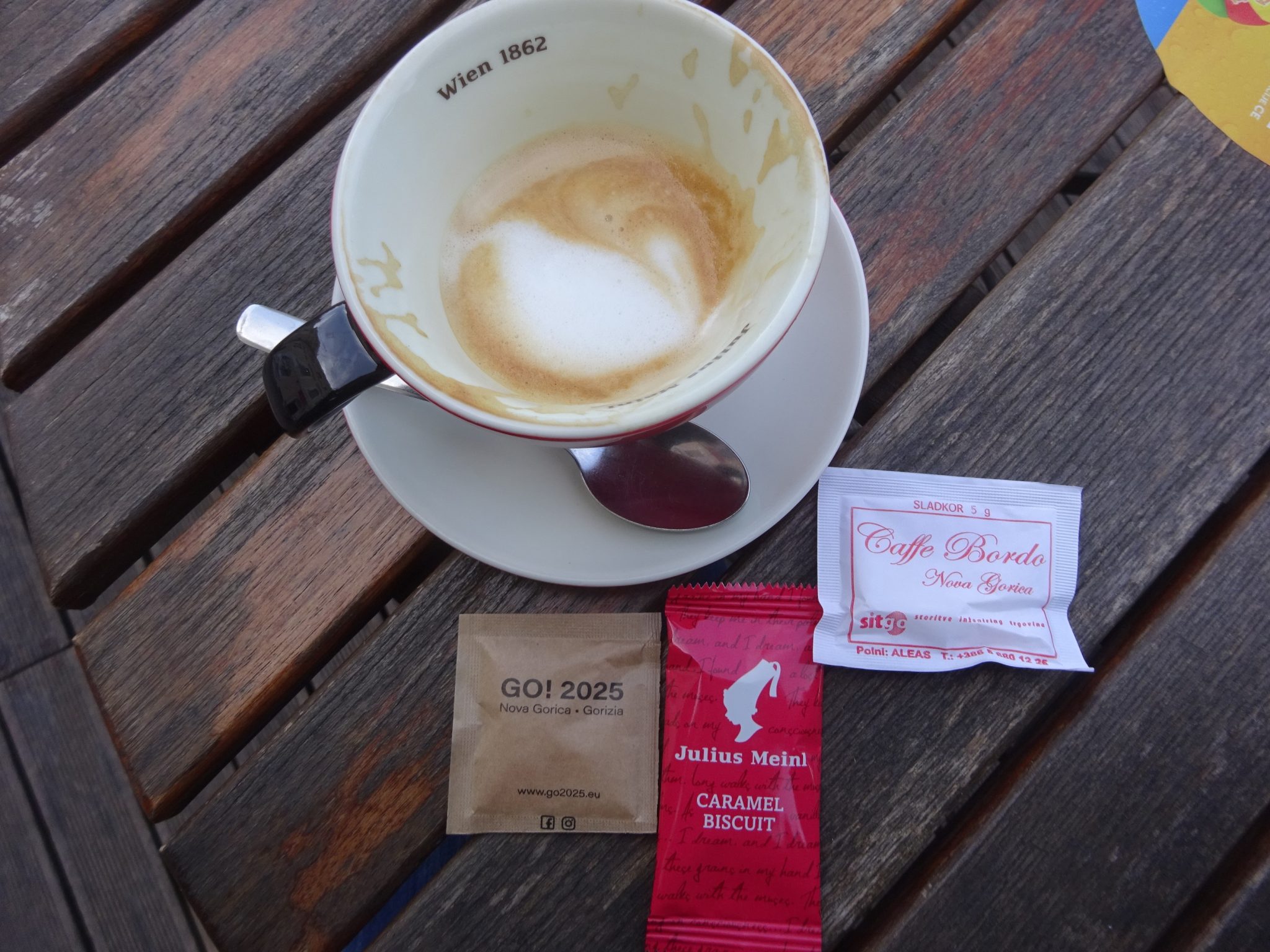
The recent events have added another layer to the imagery of Trg Evrope. During the first COVID-19 lockdown in spring of 2020, when the border was closed, apart from recalling “traumatic” past experiences, the square became a central meeting point for locals from both sides of the border. Instead of prohibiting cross-border events like dance performances, ball games, or putting up referee’s chairs to have a beer across the building fence, the town municipalities encouraged those activities. This decision turned out to be a wise one because without those events, or, more fundamentally, without the border between them, the two ‘Gorizias’ would never have been awarded the European Capital of Culture 2025.
There is much talk about projects regarding the GO!2025: A museum directly on the border, a legally independent interstate zone, or a complete redesign of the Trg, including the tearing down of the fence and even the mosaic. The square is intended to become a modern, open space for hanging out as well as various cross-border events, attracting people from both sides of the border equally. Those plans are a controversial topic among the Goriška people – some of them don’t think much of rebuilding the square and setting the past aside for an as-yet imaginary future. They would prefer the Trg to remain in its present appearance as a familiar part of their Cultural Memory.
How things will really develop over the next three years has not been determined yet, and it is something that might well be worth watching from the terrace of Caffe Bordo over some more cappuccinos. Still, no matter what the stage called “Trg Evrope” holds for future observers, one prediction can be made already – whatever the director’s notes, in the end, it is always the actors who make the play.
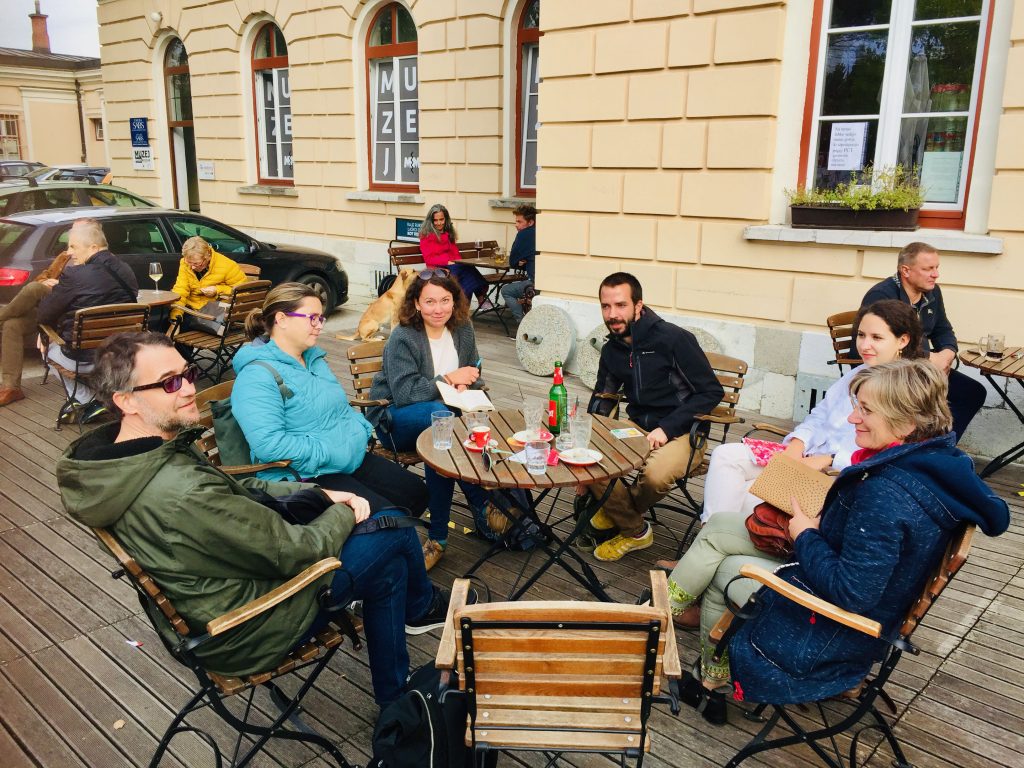
[1] In his book Imagined Communities, Benedict Anderson describes how maps, on top of their primary use for orientation, gained the function of a logo: During late 19th-century colonialism, empires started to mark their colonies in the same colour as the main country. This led to the extractable country avatars we know so well from “posters, official seals, letterheads, magazine and textbook covers, tablecloths, and hotel walls” (Anderson 2006: 175).
Literature
Anderson, Benedict (2006) [1983]: Imagined Communities. London: Verso.
Assmann, Aleida (2009): Erinnerungsräume. Formen und Wandel des kulturellen Gedächtnisses. München: Beck.
Assmann, Jan (1988): Kollektives Gedächtnis und kulturelle Identität. In: Assmann, J. & T. Hölscher (Hg.): Kultur und Gedächtnis. Frankfurt: Suhrkamp. S. 9-19.
Diener, Alexander & Joshua Hagen (2012): Borders. A Very Short Introduction. New York: Oxford University Press.
Dunker, Axel; Stolz, Thomas & Ingo Warnke (Hrsg.) (2017): Benennungspraktiken in Prozessen kolonialer Raumaneignung. In: Koloniale und Postkoloniale Linguistik / Colonial and Postcolonial Linguistics (Band 10). Berlin: De Gruyter.
Gerst, Dominik; Klessmann, Maria & Hannes Krämer (2021): Grenzforschung. Handbuch für Wissenschaft und Studium. Baden-Baden: Nomos.
Goffman, Erving (2009) [1963]: Interaktion im öffentlichen Raum. Frankfurt a. M.: Campus.
Gudehus, Christian; Eichenberg, Ariane & Harald Welzer (Hg.) (2010): Gedächtnis und Erinnerung. Ein interdisziplinäres Handbuch. Stuttgart/Weimar: Metzler.
Häberlin, Udo & Jürgen Furchtenlehner (2017): Öffentlicher Raum für alle? Raumaneignung versus Gemeinwesen in der Wiener Praxis. In: Hauck, Thomas; Hennecke, S; Körner, S (Hg.): Aneigung urbaner Freiräume. Ein Diskurs über städtischen Raum. Bielefeld: Transcript. S. 171-199.
Kroh, Jens & Anne-Katrin Lang (2010): Erinnerungsorte. In: Gudehus, C.; Eichenberg, A. & H. Welzer (Hg.) (2010): Gedächtnis und Erinnerung. Ein interdisziplinäres Handbuch. Stuttgart/Weimar: Metzler. S. 184-188.
Municipalities of Nova Gorica and Gorizia (2020): GO! BORDERLESS. Nova Gorica-Gorizia 2025. Nova Gorica: A-Media. Online unter: https://www.go2025.eu/wp-content/uploads/2021/03/GO2025engCompressed-Screen-1.pdf, aufgerufen am 3. 3. 2022.
Sedmak, Drago (2013): Die Staatsgrenze im Goriška-Gebiet. Nova Gorica: Goriški Muzej.
Tophinke, Doris & Evelyn Ziegler (2019): Einleitung. Die Stadt als öffentlicher Kommunikationsraum. In: Zeitschrift für germanistische Linguistik 47 (2). Berlin: De Gruyter. S. 293-312.